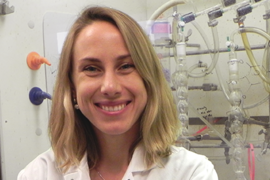Today, MIT Technology Review revealed its annual 35 Innovators Under 35. Among the 2015 honorees are members of the MIT community who are uncovering the mysteries of the brain, revolutionizing space travel, and innovating the way we interact with our world.
Entrepreneurs:
Patrick Collison '10, CEO and co-founder of Stripe
Patrick Collison's online payment company processes billions of dollars in transactions every year for companies in 11 countries. The developer-friendly platform is a favorite among both startups and Fortune 500 companies, and powers the majority of apps using Apple Pay. Collison developed Stripe with his brother John, who serves as the company's president.
Rikky Muller '04, MNG '04, CTO and co-founder of Cortera Neurotechnologies
At Cortera Neurotechnologies, Rikky Muller is developing next-generation implants to study and treat neurological disorders. Muller aims to revolutionize health care by treating psychological conditions such as post-traumatic stress disorder and depression with microsystem-based implants. Her work is among the projects funded last year by the Obama administration's BRAIN Initiative.
Inventors:
Canan Dagdeviren, postdoc in the Langer Lab at MIT
Canan Dagdeviren has created implantable nanogenerators that can be powered by the movement of internal organs. These first-of-their kind devices could extend the battery life of implanted medical devices such as pacemakers — or even eliminate the need for battery replacement, sparing patients from repeated operations and the risk of surgical complications.
Conor Walsh SM '06, PhD '10, assistant professor of mechanical and biomedical engineering at Harvard University
Conor Walsh is developing robots that fit like a glove — literally. A leader in the field of soft robotics, Walsh's work focuses on creating systems to assist people with disabilities. He's currently developing a lightweight, fabric exosuit outfitted with special sensors to help people who have difficulty walking.
Pioneers:
Polina Anikeeva PhD '09, the Class of 1942 Assistant Professor in Materials Science and Engineering at MIT
Polina Anikeeva's research combines nanomaterials synthesis and device fabrication with the goal of changing how medicine treats neurological disorders. Tools developed in her lab at MIT could lead to new, non-invasive ways to treat brain disorders such as Parkinson's disease and depression, and restore movement in patients with spinal cord injuries.
Gilad Evrony '04, Harvard Medical School
Thanks to a single neuron sequencing process developed by Gilad Evrony and colleagues at Boston's Children's Hospital, researchers can now observe how brain cells disperse and migrate during development. Using this "microscope for the brain", Evrony has mapped the origins of neural mutations, which indicate that some neurologic disorders are the result of mutations that occur during development. Such research could also provide insight into age-related cognitive decline, as well as brain disorders such as epilepsy.
Visionaries:
Lars Blackmore PhD '07, engineer at SpaceX
Lars Blackmore has some bold ideas about how to transform the economics of space travel. The SpaceX engineer is working to develop software that can send rockets back to Earth, instead of simply letting them break up and fall into the ocean — a practice Blackmore compares to flying a 747 once and throwing it away. Because fuel accounts for less than half of 1 percent of the cost of a rocket launch, refurbishing a rocket would make the next launch considerably cheaper.








